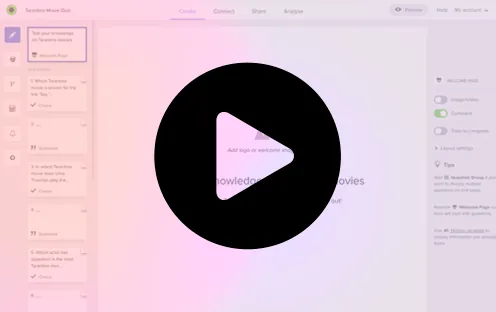4 min read

Conversational forms are the current trend. The reason of the growing popularity is a better completion rate. This debate transcends mere stylistic preference, touching the core of how effectively we convey ideas, emotions, and information in an increasingly interconnected world. On the one hand, conversational forms, known for their informal, relatable tone, mirror everyday dialogue, making them highly accessible and engaging. On the other, classic forms uphold the standards of formal structure, precision, and a timeless quality that has long been revered in academic and professional circles. In this article, we delve into the nuances of both styles, examining their strengths and limitations, to unravel which approach, conversational or classic, might better suit the diverse spectrum of our modern communication needs.
In this article, I will try to get deeper into this problem. Are there any examples of classic forms that work better than conversational forms?
What is a conversational form?

A conversational form is an online form that mimics human conversation and is often used to enhance user experience in data collection, surveys, and user interactions on websites and applications.
Unlike traditional, static forms, conversational forms present questions or prompts one at a time, like a natural dialogue. This approach can make filling out a form more engaging and less overwhelming for the user. Here are some key characteristics of conversational forms:
- Interactive Format: Instead of displaying all questions simultaneously, conversational forms typically present one question at a time, much like in a real conversation. This can help keep the user focused and reduce the feeling of being overwhelmed by a long list of questions.
- Natural Language: These forms often use a casual, friendly tone and may include elements of natural language to make the interaction feel more like a chat with a human rather than filling out a form.
- Personalization: Conversational forms can include personalization elements, such as using the respondent’s name or tailoring follow-up questions based on previous answers, enhancing user engagement.
- Adaptive Responses: They can dynamically adapt based on the user’s inputs. For example, the form might skip certain questions or branch into different topics based on the user’s previous answers.
- Visual and Interactive Elements: Many conversational forms incorporate visual elements like avatars, progress bars, or animations, and interactive elements like buttons or sliders, making the experience more engaging than traditional forms.
- Mobile-Friendly Design: These forms are often designed with a strong focus on mobile users, providing a seamless experience on smaller screens.
David Okuniev, the co-founder of Typeform, recently shared some intriguing statistics in a post, shedding light on the performance of their platform in 2023. Okuniev said Typeform experienced approximately 80 million form openings each month, with around 50 million of these translating into submissions. This data points to a notable completion rate of just over 60% – a commendable figure in online form engagement. Looking at our experience in a smaller scale, the completion rate is very similar.
The classic form style, characterized by its straightforward, no-frills layout, often aligns well with users seeking clarity and efficiency. The classic format can enhance the user’s focus and comprehension in contexts where the user expects or requires a more formal, structured approach – such as legal documents, academic surveys, or official government forms. Moreover, in environments where accessibility is paramount, the simplicity and predictability of classic forms can be particularly beneficial for users with certain disabilities or those less comfortable with more dynamic, conversational interfaces.
Traditional forms are not dead

Furthermore, in professional or corporate settings, where the data being collected is highly sensitive or technical, the classic form’s clear, delineated structure can help reduce errors and improve the accuracy of the information gathered. This is crucial in industries like healthcare, finance, and legal, where the precision of data can have significant implications.
In exploring these scenarios, it becomes evident that while Typeform’s conversational approach has proven highly effective, achieving a 60% completion rate, there remains a spectrum of situations where the classic form style could offer superior performance. This exploration highlights the importance of understanding the context and audience when designing forms and underscores the need for a balanced approach in choosing between conversational and classic form styles, depending on the specific requirements and goals of the form in question.







